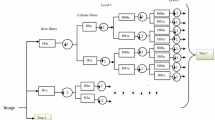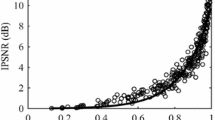Abstract
This paper proposes a new modeling method of texture images based on morphological operations. For the texture analysis One of important texture modeling method is the linear prediction. In the linear prediction method, the frequency feature of texture images is put into autore-grssive (AR) model (i.e., all-pole linear filter) On the other hand,we would like to show new models which represent the structural feature of texture images. It is well known, the patter spectrum calculated by morphological operations are utilized the texture analysis, since morphological operations have the ability to extract structural feature. Thus, we attempt to put into structural feature of texture images put into the structural element of morphological operations. We show the effectiveness of the proposed models through the recognition test.
Access this chapter
Tax calculation will be finalised at checkout
Purchases are for personal use only
Preview
Unable to display preview. Download preview PDF.
Similar content being viewed by others
References
A.K. Jain, “Fundamentals of digital image processing”, Prentice-Hall, Inc., 1989.
P. Maragos, “Pattern spectrum and multiscale shape representation”, IEEE Trans, on PAMI, vol. 11, no.7, pp.701–715, 1989.
M. Vanrell and J. Vitria, “Mathematical morphology, granulometries and texture perception”, Proc.SPIE Vol.2030, pp. 152–161, 1993.
N.R. Harvey and S. Marshall, “Using genetic algorithms in the design of morphological filters”, Proc. ISMM’94, 1994.
P. Brodatz, “Textures”, Dover, 1966.
Author information
Authors and Affiliations
Editor information
Editors and Affiliations
Rights and permissions
Copyright information
© 1998 Springer-Verlag Berlin Heidelberg
About this paper
Cite this paper
Taguchi, A., Komori, T. (1998). Modeling of Texture Images by the Structuring Element of Morphological Filters. In: Marshall, S., Harvey, N.R., Shah, D. (eds) Noblesse Workshop on Non-Linear Model Based Image Analysis. Springer, London. https://doi.org/10.1007/978-1-4471-1597-7_37
Download citation
DOI: https://doi.org/10.1007/978-1-4471-1597-7_37
Publisher Name: Springer, London
Print ISBN: 978-3-540-76258-4
Online ISBN: 978-1-4471-1597-7
eBook Packages: Springer Book Archive




